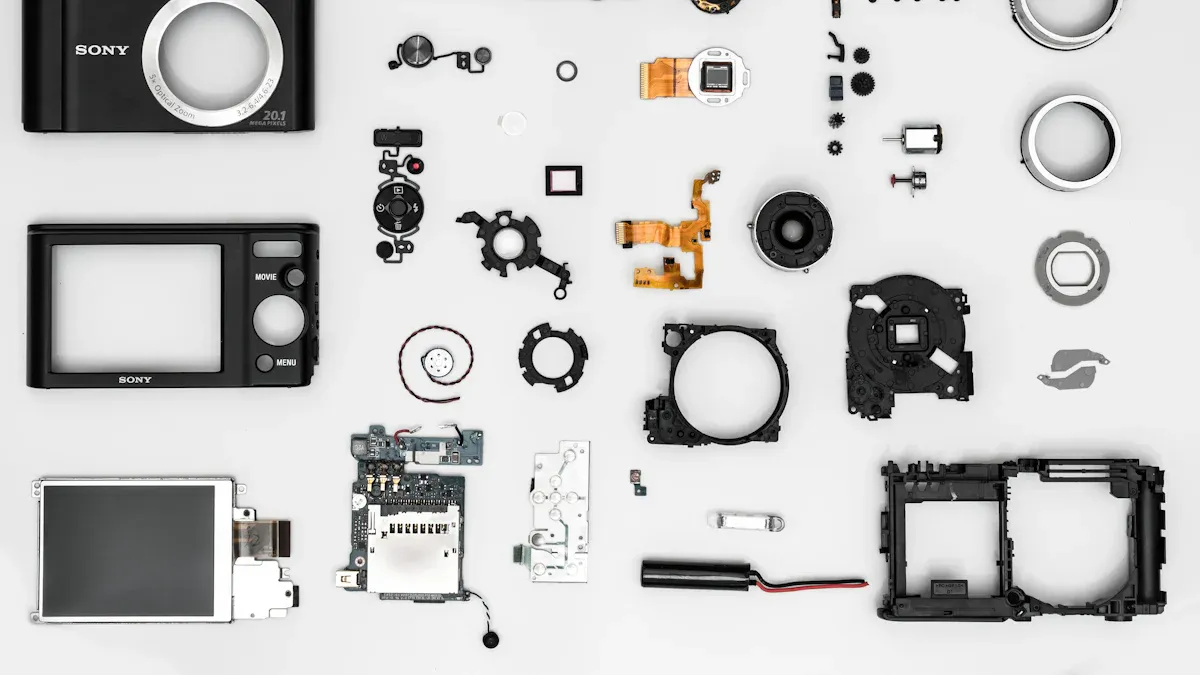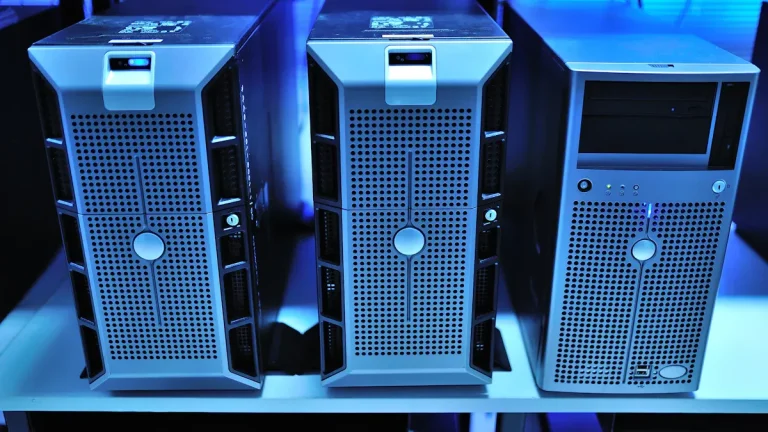
You must put safety first when you approach battery design for any UAV or drone inspection system. Battery failure in a drone can cause loss of payload, damage to infrastructure, and risk to security systems. In medical and industrial sectors, a single failure may disrupt critical operations. Safety first means you need advanced battery management systems that monitor UAV batteries in real time, predict maintenance needs, and prevent overheating or short circuits. See how these functions help:
Function | Benefit |
|---|---|
Real-time monitoring | Detects issues before they escalate |
Predictive maintenance | Allows for timely repairs and replacements |
Overheating prevention | Reduces risk of thermal runaway |
Overcharging protection | Prevents damage from excessive charging |
Short circuit prevention | Enhances overall battery safety |
Safety first also requires rigorous testing in battery design for drone technology. You rely on these safety measures to protect your UAV fleet and ensure reliable inspection results.
Key Takeaways
Prioritize safety in battery design to prevent failures that can disrupt critical operations in drones.
Implement advanced battery management systems (BMS) for real-time monitoring and predictive maintenance to enhance battery reliability.
Conduct rigorous testing to identify weaknesses and ensure compliance with safety standards for drone battery packs.
Select the right battery chemistry based on environmental conditions to maintain performance and safety during inspections.
Follow best practices in battery design, including robust enclosures and thermal management, to protect against overheating and damage.
Part 1: Safety First in UAV Battery Design

1.1 Battery Safety Challenges
You face many battery safety challenges when you design drone-based inspections for industrial, medical, and security systems. Lithium-based batteries power most drones because they offer high energy density and long cycle life. However, these batteries can pose serious risks if you do not manage them properly. Fire hazards and thermal runaway are two of the most common dangers. Physical damage from crashes or punctures can also compromise battery integrity. Manufacturing defects in low-quality batteries increase the risk of safety incidents.
Tip: Always choose batteries from trusted suppliers and inspect them before use.
Here is a summary of the most frequent battery safety challenges in UAV applications:
Challenge | Description |
|---|---|
Fire Hazards | Lithium-based batteries can catch fire or explode if damaged, overcharged, or exposed to extreme conditions. |
Thermal Runaway | Overheating can trigger uncontrollable chemical reactions, leading to fires. |
Physical Damage | Crashes or punctures can compromise battery integrity, resulting in fire hazards. |
Manufacturing Defects | Poor-quality batteries increase the risk of safety incidents. |
You must address these challenges early in your battery design process to ensure reliable performance in drone-based inspections.
1.2 Reliability Factors
Reliability is essential for drone batteries in unmanned inspection systems. You need to consider aging, quality, and connection integrity. Aging batteries lose capacity and gain resistance with every charge cycle. This leads to sudden voltage drops and shorter flight times. Poor quality batteries may lack protection circuits, making them prone to failure. Loose connections can interrupt power and cause crashes. Voltage sag from heavy loads or cold weather can also affect reliability.
Cause of Battery Failure | Description | Preventive Measure |
|---|---|---|
Aging batteries | Lithium batteries lose capacity and gain resistance with every charge cycle, leading to sudden voltage drops. | Regularly replace batteries and monitor their health. |
Poor quality | Cheap batteries may lack proper protection circuits, making them prone to failure. | Invest in high-quality batteries with reliable specifications. |
Loose connections | Wobbly plugs or bad contacts can interrupt power, causing crashes. | Ensure all connections are secure and regularly check for wear. |
Voltage sag | Heavy loads or cold weather can cause voltage to drop suddenly. | Use battery management systems to monitor voltage levels. |
You can use machine-learned battery lifetime predictive models to estimate battery lifespan. These models combine experimental aging data with performance models for battery cells, packs, and systems. Advanced statistical methods, such as canonical correlation analysis and contingency table analysis, help you optimize battery parameters for high state-of-charge estimation accuracy. These steps improve reliability and help you deliver reliable performance in drone-based inspections across medical, robotics, and industrial sectors.
Part 2: Battery Management and Testing
2.1 Role of BMS in Safety
You rely on advanced battery management systems (BMS) to keep your lithium battery packs safe and efficient in unmanned inspection systems. A BMS acts as the brain of your battery, monitoring every cell and controlling charging and discharging. In medical, robotics, and security applications, a robust BMS prevents failures that could disrupt critical operations or cause costly downtime.
A modern BMS uses multiple sensors to track battery performance in real time. You benefit from voltage sensors that measure each cell, current sensors that monitor flow, and thermocouples that prevent overheating. Some systems even detect structural changes and moisture levels, adding extra layers of protection.
Sensor Type | Function |
|---|---|
Voltage Sensors | Measure the voltage of each individual cell in the battery pack. |
Current Sensors | Monitor current at specific nodes in the battery pack. |
Thermocouples | Provide multiple temperature readings to prevent overheating. |
Additional Sensors | Explore structural change and moisture level detection. |
Your BMS checks for excessive voltage, insufficient voltage, excessive current, short circuits, and high heat levels. These features help you avoid thermal runaway and maintain battery performance. Gas generation inside the battery can cause swelling and lead to dangerous side reactions. Monitoring this process gives you early warnings and helps prevent catastrophic failures, especially in UAVs used for infrastructure and industrial inspections.
A BMS also tracks the state of health (SOH) of your battery. SOH gives you a percentage that compares your battery to a new one. You can see how much capacity remains and spot reduced power delivery caused by internal resistance changes. This information lets you plan maintenance and avoid unexpected downtime.
Note: Intelligent battery management systems allow you to monitor voltage, temperature, and current continuously. You can prevent overcharging, deep discharging, and overheating. Operators can check battery status remotely and schedule maintenance before problems arise.
Key features of advanced BMS include:
Protection mechanisms such as pack/cell over/under voltage and temperature protection, short circuit detection, and secondary protections like fuses.
Monitoring capabilities using Coulomb Counting and EMF Curve Estimation for accurate charge status and battery health.
Cell balancing with passive and active techniques to ensure even charge distribution and maximize battery performance.
Communication interfaces supporting SMBus and CAN protocols for seamless integration.
Certification considerations that focus on regulatory compliance and mechanical integrity from the design phase.
You can learn more about BMS technology and its role in lithium battery packs here.
Aspect | Description |
|---|---|
Thermal Runaway Prevention | BMS continuously monitors and controls battery parameters to prevent thermal runaway, regulating charging/discharging rates, cell balancing, and thermal conditions. |
Advanced Monitoring | Algorithms and sensors track voltage, current, temperature gradients, and internal resistance, enabling early detection of potential thermal runaway and implementation of protective measures. |
Regulatory Frameworks | Aviation industry follows international regulations, such as ICAO, which establish requirements for battery safety standards, particularly regarding thermal runaway risks. |
Solid-state batteries represent a major advancement. You get a longer lifespan—over 1,500 cycles—plus better performance in extreme temperatures. These batteries allow drones to use more power when needed, improving battery performance in demanding inspection scenarios.
2.2 Testing for Reliability
You must test your lithium battery packs thoroughly to ensure reliable performance in UAVs and inspection systems. Testing helps you identify weaknesses and verify that your batteries meet safety and regulatory standards. You use several methods to simulate real-world conditions and push your batteries beyond normal limits.
Testing Method | Purpose |
|---|---|
Thermal Runaway Testing | Simulates worst-case scenarios to evaluate heat generation and containment strategies. |
Mechanical Stress Testing | Assesses battery resilience against vibrations and shocks in real-world conditions. |
Electrical Safety Evaluations | Ensures batteries can prevent overcharging and withstand reverse polarity connections. |
Compliance with Global Standards | Validates safety during transportation and ensures airworthiness for commercial use. |
AI and Smart Diagnostics | Uses predictive maintenance to forecast potential failures and enhance battery reliability. |
You perform vibration testing to replicate airborne turbulence and ensure battery performance under stress. Shock and drop tests assess resilience against physical trauma, making sure there are no leaks or damage. You simulate foreseeable abuse to test batteries under extreme conditions, exceeding standard safety requirements.
Vibration Testing: Replicates airborne turbulence to ensure battery performance under stress.
Shock and Drop Tests: Assesses resilience against physical trauma, ensuring no leaks or damage.
Foreseeable Abuse Simulations: Tests batteries under extreme conditions to exceed safety requirements.
You must comply with UN 38.3 certification for safe transportation. FAA and EASA enforce airworthiness criteria for drone batteries. Emerging standards focus on thermal management and fail-safe mechanisms, which are critical for medical, robotics, and industrial applications.
Simulation and hardware-in-the-loop (HIL) testing improve battery performance and reliability. You use these methods to monitor your BMS in real time and optimize algorithms for managing state of charge and temperature. Studies show that the Luenberger Observer offers the best balance for performance. Real-time validation through HIL testing makes your monitoring system more robust, addressing issues like resistive degradation.
Simulation and HIL testing allow for real-time monitoring of battery management systems.
These methods help you identify and optimize monitoring algorithms crucial for managing battery state of charge and temperature.
Real-time validation through HIL testing enhances the robustness of the monitoring system, addressing issues like resistive degradation.
Tip: Always standardize lithium battery chemistry nomenclature in your documentation. For example, use “Li-ion” for lithium-ion, “LiFePO4” for lithium iron phosphate, and “Li-poly” for lithium polymer. This helps you avoid confusion and ensures technical accuracy across medical, industrial, and security system applications.
You see rapid advancements in battery technology, such as fast charging. Some batteries reach 80% charge in just 30 minutes with 5C fast charging. Others charge from 0% to 80% in under six minutes. Wireless power transfer methods also improve battery performance and reduce downtime in inspection systems.
You must focus on rigorous testing and advanced management to deliver reliable battery performance in every application scenario. This approach keeps your UAVs safe and operational, whether you work in medical, robotics, security, infrastructure, consumer electronics, or industrial sectors.
Part 3: Environmental and Operational Safety

3.1 Temperature and Mechanical Stress
You must consider environmental factors when designing battery packs for drone missions in industrial, medical, and security applications. Temperature extremes can impact battery safety and performance. Studies show that lithium-ion batteries in drones lose capacity at low temperatures. Discharge capacity drops to 85.9% between −18 and 0 °C compared to warmer conditions. Increased internal resistance at sub-zero temperatures reduces battery efficiency and shortens flight time. Overheating can cause explosions, especially during demanding missions.
Mechanical stress also affects battery reliability. Drones experience vibrations and shocks during flight, which can lead to battery degradation, swelling, or fires. Lithium-ion and lithium-polymer batteries are especially vulnerable. Battery weight can reach up to 65% of total drone mass, limiting flight duration and increasing stress on the pack. You must address these risks to maintain safety features and operational reliability.
Tip: Use thermal management systems to enhance battery efficiency and maintain thermal safety during extreme missions.
Humidity and altitude present additional challenges. High humidity can cause condensation, leading to short circuits and corrosion of battery terminals. Humid air reduces propeller efficiency, increasing power requirements. Moisture ingress lowers charging efficiency and can compromise safety features.
3.2 Battery Selection for Extreme Conditions
Selecting the right battery chemistry for drone missions in harsh environments is critical. You need to match battery performance to operational demands in robotics, medical, and industrial sectors. The following table compares lithium battery chemistries standardized for technical accuracy:
Battery Chemistry | Performance Characteristics |
|---|---|
Lithium-Selenium | Suitable for high-altitude missions; efficient under reduced pressure and temperature swings. |
Lithium-Air | Designed for aerospace and security systems; effective in extreme conditions. |
Cold-Resistant Lithium-Ion | Operates at −70°C; retains up to 70% capacity in extreme cold for infrastructure inspections. |
Hard Carbon | Used in compact lithium batteries; maintains up to 80% charge at −40°C; cost-effective for industrial use. |
Water-Based Fireproof | Innovations for enhanced safety features in extreme environments. |
When you select batteries for drone missions, follow industry standards. Consider temperature tolerance, vibration resistance, water and dust resistance, and the presence of an intelligent battery management system. High reliability ensures consistent performance in harsh conditions.
Criteria | Description |
|---|---|
Temperature Tolerance | Operates in extreme temperatures. |
Vibration Resistance | Withstands vibrations during flight. |
Water and Dust Resistance | Protects against environmental elements. |
Battery Management System (BMS) | Monitors and protects battery cells. |
High Reliability | Delivers consistent performance in harsh environments. |
You should store lithium-ion batteries at a partial state of charge (40% to 50%) and avoid extreme temperatures. Monitor battery temperature between 10 °C and 40 °C for optimal performance. For flooded lead-acid batteries, check water levels regularly to prevent electrolyte issues.
Note: Always arrange lithium-ion or lithium-polymer cells in series and parallel to achieve the required voltage and capacity for your drone missions. Use an intelligent BMS to monitor and protect every cell, ensuring safety features remain active throughout each flight.
Part 4: Safety Best Practices and Standards
4.1 Compliance with Safety Standards
You must follow strict safety standards when you design battery packs for drone inspection systems. These standards protect public safety and ensure reliable operation in medical, robotics, security, infrastructure, consumer electronics, and industrial applications. International standards guide you through the process and help you avoid costly mistakes.
The UL 3030 standard sets safety requirements and testing protocols for UAV battery packs. Certification to UL 3030 shows regulators that your battery meets safety and performance benchmarks.
Engaging with UL during the design phase gives you access to compliance expertise and helps you navigate regulatory challenges.
You must also consider other standards, such as UN 38.3 for safe transportation and IEC 62133 for lithium battery safety.
You will find that regulatory requirements differ across regions. The table below summarizes key regulations for major markets:
Region | Key Regulations |
|---|---|
United States | UL 1642, UL 2054, UN/DOT 38.3, FCC, OSHA |
Europe | CE Marking, EN IEC 62485-5, EN IEC 62619, UN 38.3, Battery Passport |
China | GB 31241-2014, GB/T 31485, CCC, UN 38.3 |
Japan | PSE Mark, METI Safety Guidelines |
You must stay up to date with evolving standards. New drone technologies drive changes in battery safety requirements. For example, advanced battery management systems (BMS) now provide real-time monitoring of battery health, state-of-charge, and state-of-health. You need to design custom solutions that meet certifications like UN 38.3 and IEC 62133. Safety features such as overcharge, deep discharge, and short circuit protection are now essential for public safety.
Note: Always use standardized lithium battery nomenclature in your documentation. For example, use “Li-ion” for lithium-ion, “LiFePO4” for lithium iron phosphate, and “Li-poly” for lithium polymer. This practice ensures technical accuracy and clear communication across all sectors.
You should also consider sustainability and ethical sourcing in your compliance strategy. Learn more about our approach to sustainability and review our conflict minerals statement to align your battery supply chain with global best practices.
4.2 Implementing Safety Best Practices
You need to implement safety best practices at every stage of battery pack design for drones. These practices protect public safety and ensure reliable performance in demanding inspection scenarios.
Place fuses close to the power source to maximize protection against overcurrent.
Use isolation monitors to check insulation and detect faults early.
Select robust enclosures to protect cells from puncture, overheating, and swelling.
Position the BMS to prevent excess heat exposure and allow for cell swelling in Li-poly packs.
The table below highlights key safety practices for battery pack design:
Safety Practice | Description |
|---|---|
Placement of BMS | Prevents excess heat exposure and allows for cell swelling in UAV Li-poly packs. |
Use of Enclosures | Protects cells from puncture and overheating, and accommodates swelling. |
Fusing | Protects against overcurrent situations, preventing overheating and damage. |
Isolation Monitoring | Ensures safe insulation between high- and low-voltage systems to prevent shocks. |
You must also address common engineering challenges:
Ensure consistent and reliable electrical output for every drone mission.
Manage electrical load distribution to prevent overcharging and deep discharging.
Address electromagnetic interference (EMI) and electromagnetic compatibility (EMC) in your battery system.
Use strong thermal management strategies to control heat generation and prevent hotspots.
Design robust structural elements to withstand mechanical stresses and reduce the risk of thermal runaway.
Tip: Always conduct rigorous testing and inspection processes to ensure consistent quality across all battery cells. This step is critical for public safety in medical, robotics, and security system applications.
You will face challenges such as improper chemical handling, hazardous storage, faulty wiring, and battery cell overheating. You must separate modules to reduce the risk of thermal runaways and use strong thermal management systems. Consistent quality and modular separation help you avoid failures and protect public safety.
You can see how industry standards evolve to address these challenges. Advanced BMS technology, compliance with certifications, and enhanced safety features all contribute to safer drone operations. The table below shows how these aspects support battery safety:
Aspect | Description |
|---|---|
Advanced Battery Management Systems (BMS) | Real-time monitoring of battery health, state-of-charge, and state-of-health with safety features. |
Compliance with Industry Standards | Custom solutions designed to meet certifications like UN 38.3 and IEC 62133 for safety and regulation. |
Safety Features | Mechanisms to prevent overcharging, deep discharging, and short circuits, enhancing overall safety. |
You must always prioritize safety best practices in your battery design process. This approach protects public safety and ensures your drone inspection systems deliver reliable results in every application scenario.
You improve safety and reliability in every battery project by following proven best practices. The table below highlights the most important safety measures for UAV battery design:
Safety Best Practices for UAV Battery Design | Description |
|---|---|
Robust Battery Management System (BMS) | Essential for monitoring battery conditions and preventing failures. |
Thermal Management | Prevents overheating and thermal runaway by ensuring proper placement and insulation. |
Real-time Monitoring | Constantly checks battery status to avoid critical failures. |
Protective Measures | Includes multiple layers of protection to ensure safe operation. |
You see a 15% rise in battery incidents over five years, with two thermal runaway incidents reported weekly. You must use advanced battery management systems, predictive maintenance, and real-time monitoring to extend battery lifespan and prevent failures. You protect medical, robotics, security, infrastructure, consumer electronics, and industrial sectors by adopting a safety-first mindset.
Battery cell balancing
Temperature monitoring
State-of-charge management
Redundant safety mechanisms
Fail-safe modes
Tip: You ensure long-term reliability and operational safety by testing, monitoring, and meeting all standards for every battery pack.
FAQ
What is the best lithium battery chemistry for industrial drone inspections?
You should use lithium-ion or lithium iron phosphate (LiFePO4) batteries for industrial drone inspections. These chemistries offer high energy density, long cycle life, and strong safety features. They perform well in harsh environments and support reliable operation in infrastructure and robotics applications.
How do you prevent battery failure in medical and security drones?
You install advanced battery management systems (BMS) to monitor voltage, temperature, and current. You use robust enclosures and isolation monitors. These steps help you avoid overheating, short circuits, and deep discharging, which are critical for medical and security system reliability.
Why is real-time battery monitoring important for unmanned inspection systems?
You rely on real-time battery monitoring to detect issues before they cause failures. This approach helps you schedule maintenance, prevent downtime, and ensure safe operation in sectors like consumer electronics, industrial inspections, and robotics.
How do you store lithium-ion batteries for maximum safety?
You store lithium-ion batteries at 40% to 50% charge in a cool, dry place. You avoid extreme temperatures and humidity. You check battery health regularly to maintain safety features, especially for applications in medical, infrastructure, and security systems.
What certifications should you consider for drone battery packs?
You should meet UL 3030, UN 38.3, and IEC 62133 certifications. These standards ensure your battery packs comply with safety and transportation regulations. You follow these requirements for reliable operation in industrial, medical, and robotics sectors.






